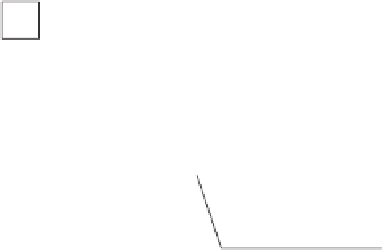Information Technology Reference
In-Depth Information
Cross-section view
ACPS line
Ferromagnetic film
A
L
B
K
C
Spine wave
Figure
7.10.
Cross-section view of spin-wave fully interconnected cluster.
in which only one transmission can be done at a time, in this architecture, multiple
simultaneous permutations are possible. This can be done by transmitting the spin
waves over different frequencies. The information is coded into the phase of the spin
waves in the sender and is detected by the receivers. In addition, within each
frequency, data can be sent to one or more other nodes from each node. In the
following we present a brief discussion on the placement of nodes and their
intercommunication mechanism.
Normally, in architectures where the phases of the waves are the means of
information transmission, the exact location of the nodes with respect to the size
of topology is an important design issue. The distance between the sender and
receiver has to be a multiple of the wavelength; otherwise, the receiver might
receive the wave at a different phase. For instance, if the wave is received with a
p
radian phase-shift, a ''0'' is received instead of a ''1'' or vice versa. In our design,
however, this is not an issue since the wavelength of spin waves is considerably
larger than the distance between the nodes. The speed of spin waves is around
10
5
m/s. Assuming the input frequency range of 1-10GHz, the wavelength will be
in the order of 10
4
to 10
5
m, while the distances are at the nanoscale, or 10
9
m.
In other words, the wavelengths of the spin waves are orders of magnitude greater
than the distances between the nodes. Therefore, all the nodes receive the same
phase regardless of their location, and there is no need to place the nodes at
specific distance relative to the other ones.
7.6. MULTISCALE HIERARCHICAL ARCHITECTURE
As mentioned earlier, the attenuation of a spin wave is about 50 microns, which
dictates the maximum size of spin-wave architectures. In order to overcome this













Search WWH ::

Custom Search